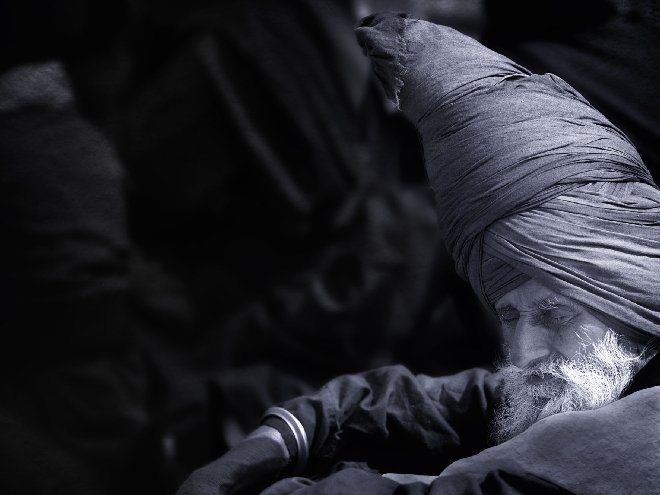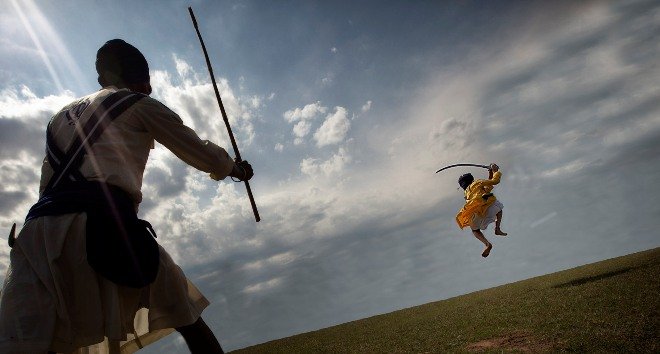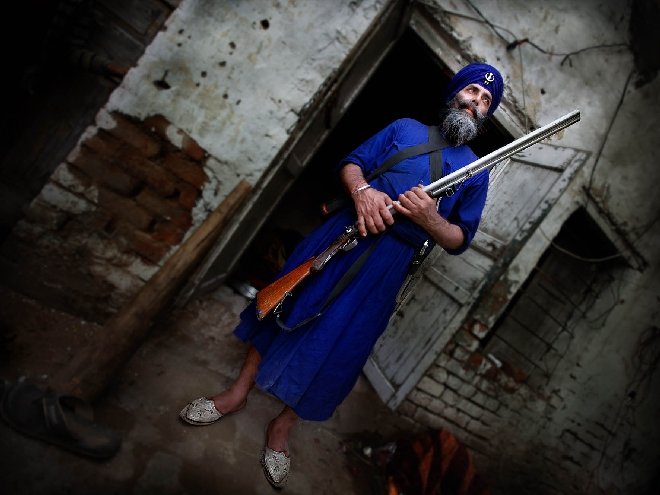[SikhNet is privileged to conclude our series showcasing the photo artist Amardeep Singh and his work. Below is the final part. You may read part I here)
You may have seen these visuals, events, places etc in real life - but these works of art through photos present before you another perspective/dimension of events, things and places - a 'seeing beyond seeing' - beyond what the eye presents as mere play of light and shadow.
Brief explanations and quotes (poetry) are provided to enrich the discerning viewer and reader. Not as a means to transport sentiments or ideas but to establish the fact that spirituality encompasses our aesthetic faculties too.
It is truly said: "looking is a gift and seeing is a power" (Gross & Shapiro, 2001). - ED]

About Amardeep
|  Life asks that we experience it through passions and this existence should not be limited to performance of daily chores. I see this creation through a language of pictures. Describing beauty around us in words is like oppressing the truth, visually though, it floats freely.
Born in India, living in Singapore, I have been living a life of a wanderer.
My wanderings started early at the age of 7, when to flourish my individuality, I was sent to be educated in boarding schools across the valley of Dehradun, in the foothills of Himalayas. I schooled at Welham Boys School till the age of 13 and thereafter at The Doon School. Wonder-struck with machines, I pursued engineering at Manipal Institute of Technology, in South India, which was later supplemented with a MBA from University of Chicago.
I work for American Express as Head of Merchant Pricing for Asia-Pacific region, a job that keeps me intellectually challenged. I have lived in Singapore, Hong Kong and India, and traveled significantly across the world.
My passions have evolved and changed many times in my life. It’s this aspect of my wandering nature that is best described as……
“Just as a white summer cloud, in harmony with heaven and earth freely floats in the blue sky from horizon to horizon following the breath of the atmosphere – in the same way the pilgrim abandons himself to the breath of the greater life that… leads him beyond the farthest horizons to an aim which is already present within him, though yet hidden from his sight.” — Lama Anagarika Govinda.
My life in the Corporate world is primarily centered around left side of the brain and it’s through the lenses that I tap into it’s creative right side.
I try to see the world beyond seeing!
| 



 |
Symbolizing the supreme power!
| | The Sikh martial tradition, that emerged in 16th century to defend the society against persecution, is philosophically based on unity of God. The infinite formless is also seen in the finite, through names of weapons, that symbolize the Supreme power.
Since the days of the 10th Guru of the Sikhs, Guru Gobind Singh, the Nihangs (martial community of the Sikh faith) have been known for their valor on the battle field, in many instances being out numbered. It was believed that a single Nihang was equal to hundred and twenty five thousand warriors.
At Anandpur Sahib, I had the opportunity to photograph a group of young students who also take pride in maintaining the martial form of the Nihangs.
Bahadur Singh, a Research Scholar at the Department of Anthropolgy, University of Chandigarh, who is photographed in the first picture of this series, is a living example of progress with changing times but yet grounded in tradition.
As I photographed these young Nihangs, the verses of Guru Gobind Singh, resonated deep in my Consciounsness.
The sword, the sabre, the scimitar, the axe, the musket, the shaft.
The rapier, the dagger, the spear: these indeed are our saints
Nihangs Anandpur Sahib


....more |
Nihangs
| |
When destruction prevailed over freedom, the “Nihangs”, an armed Sikh order, were the ones that offered their lives to protect the rights of the common man in the North West state of Punjab. Today it remains a ceremonial order within the Sikh community but during the period 1699-1849 AD, they were the first line of martial defense.
Every year, during the annual celebration of Hola Mohalla, the Nihangs come together at Anandpur Sahib in Punjab, adorning ceremonial weapons. Most take pride in their large size turbans, which can take 2-3 hours to tie.
In this series, I have tried to create a feeling of the bygone era by showing it in Black & White.


.....more |
Stick & Sword
| |
“Nihangs”, the Gurus warriors, still maintain the traditional ways of the eighteenth century, not out of it’s necessity of the 21st century but for their love of their past.
Even today, young boys in Punjab are found to join the existing few groups of Nihangs and dedicate themselves in the training of traditional warfare.
At Anandpur Sahib, a young boy caught in the act of jumping while wielding his sword, as the elder one enacts a teacher controlling the actions through his stick.

|
Guns of Nihangs
| |
Nihangs, the last guardians of the Sikh martial spirit, roam freely across the Punjab (western state of India). Their nomadic lifestyle is dedicated to praying the almighty and practicing the Sikh martial arts. They maintain these traditions from the time of the 10th Sikh Guru, who left this world in 1708 AD.
A description of them from an ancient text (Prachin Panth Prakash) is what we can continue to see today.
“Where the Khalsa (Sikh Army) had set camp the war drums were being beaten and battle standards were raised. He arrived at where the Singhs were based. Ahead he could see where the Singhs were congregating. The musicians sung the Gurus hymns while others read the scriptures. Some were grounding sukha (cannabis) and others were preparing mahaparshad (meat). Some Singhs were cleaning and sharpening their weapons. Some trained in archery while other did target practise with their muskets. The Singhs massaged each other while others fanned the congregation. Some set off far to fetch water for the Singhs to bathe in…Running around the Singhs served one another”. (Prachin Panth Parkash)
Each year, during the spring festival of Holla Mohalla, the Nihangs still come together at Anandpur Sahib (Punjab) from all corners. It is their time to show the world their dedication to the ancient martial traditions of the Sikhs.
In creating this series of “Guns of Nihangs”, I broke the barrier by first striking dialogues with them. Having demonstrated my intent, I was then able to partner in making them pose with their Guns around their tented habitats.



....more
|
|


